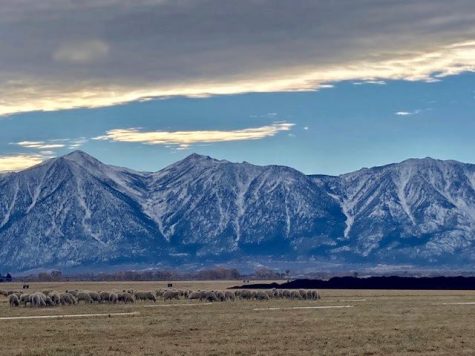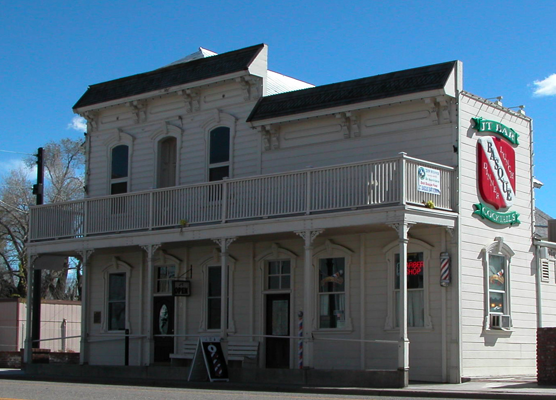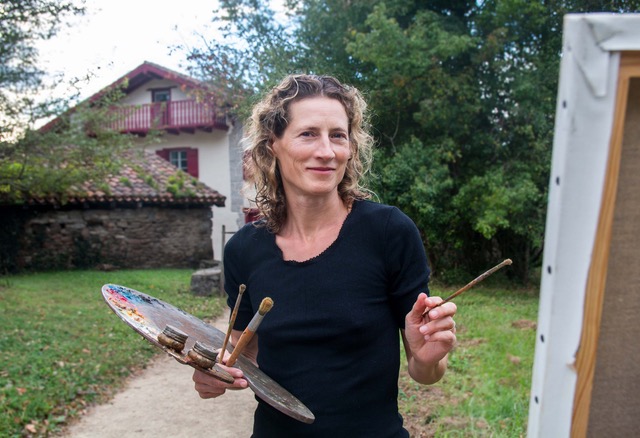One of the last in a long line of Basque sheep ranchers whose flocks once ranged over northern Nevada, Ted Borda grows wistful as he recalls the exhilarating scent of sagebrush and sheep wool at shearing time. He waxes lyrical as he looks out over a wide area of land sparsely populated by sheep and encircled by snow-capped mountains.
“The smell of the sheep, the smell of that wool, it gets in your blood,” he rhapsodizes. “The smell of the sagebrush when you’re out in the desert and the sheep are going through the sagebrush, it’s just a lovely smell.”
Right now, we are standing in a flat expanse on which the sheep are grazing on the remains of a recently harvested alfalfa crop. Nearby, a farmhand is laying out buckets of salt in the corral where the sheep will shelter overnight. They will be guarded by two huge white Pyrenean Mountain dogs, ready to fend off coyotes or any other troublesome visitors.

A man in his late 60s, Ted Borda and his sisters Joyce Borda Gavin and Angie Borda Page run the Borda Ranch, a sheep-ranching business inherited from their father, Pete Borda, and their grandfather, Raymond, who emigrated to Nevada in 1912 from the town of Bidarrai in the historic province of Nafarroa Beherea (Lower Navarre). Raymond Borda came initially to work as a sheepherder for his brother-in-law but 10 years later, he set up his own sheep operation. At that time, more than 500,000 sheep belonging to numerous owners roamed the Washoe and Carson valleys at the foot of the Sierra Nevada.
A century later, the Bordas are one of very few still carrying on the tradition in this area, with a herd of around 5,000 sheep. They have had to adapt to changing consumption patterns, rampant urban development and the challenges of global warming.
Discussion of climate change is often conflicted in Nevada, but Borda has no doubts about its reality. “You can feel it,” he declares. Wildfires have become more frequent, and feed and water are less abundant than in the past, obliging the sheep to move around more. “Now we run one band of sheep for three months, when before we ran three bands of sheep there for the same length of time,” Borda explains. “Seven hundred sheep now instead of 1,900. The effect is real.” Buy this book about Basques and the sheep industry in Nevada.
Sheep Help with Fire Prevention
Part of the value of sheepherding in this situation is that they help with fire prevention. Borda frequently sits down with representatives of the US Forest Service and the Bureau of Land Management to plan where his sheep should go next to eat the invasive cheatgrass that grows in the valleys and mountains of Nevada before it becomes fuel for wildfires. Here, too, however, new pressures caused by global warming are making themselves felt.
“We need to get there before the cheatgrass turns purple,” a deadline that is getting earlier and earlier. “Otherwise, the sheep won’t eat it,” he explains.

Over a century ago, Basque sheep ranchers earned a good living providing meat for hungry gold and silver prospectors and wool for the uniforms of US Army soldiers. Today, by contrast, appetites for sheep meat have diminished and synthetic textiles have largely replaced wool for clothing. Falling prices and stricter government regulations for livestock grazing have forced the Bordas to adapt and find new niche markets.
While Borda runs the practical side of the business, helping with moving the sheep from one site to another and seeing to the needs of the sheepherders, his sisters Borda Gavin and Borda Page focus on its marketing and accounting aspects. They sell their lamb to local retailers and restaurants and to bigger distributors such as a firm in North Dakota that supplies large Jewish communities on the East Coast. They have developed a partnership with a regional wool company; wool from their sheep was used to produce the sweaters of the US team at the 2022 Winter Olympics.
MORE STORIES by ZOE BRAY
Granddaughters of Basque Immigrant Create Successful Reno Food Coop
Modern Basque Dance Group in Northern Nevada
The sheep are a mix of Rambouillet and Merino breeds, noted for the quality of their meat and wool. Each band of approximately 700 sheep is tended by two sheepherders, members of a Mexican family which has a long-standing relationship with the Bordas. Fathers, sons and brothers-in-law come from the state of Zacatecas in north-central Mexico to spend alternating six-month periods herding the sheep. In February they will begin walking from their present winter pastures to a ranch by Topaz Lake in the mountains that divide Nevada from California, some 25 miles distant. There, they will be sheared, and lambing will begin in March.
By April, the sheep will be ready to head to the High Sierra where they will stay until the fall. Borda will be responsible for bringing the sheepherders weekly food supplies, walking the last 13 miles to their camp accompanied by a horse and a donkey. With new challenges facing what is now a much smaller operation than a generation ago, it’s unclear what the future holds in store. For Borda, however, there’s no question about the present. “This is my happy place right here. It can’t get better than this, I have my sheep and I have my mountains.”
Bray’s article was also published in French with the Iparralde online platform Mediabask.
Bray recently published a bilingual children’s book in English and Basque

















janine maitia araneta • Feb 7, 2023 at 6:57 pm
Awesome, dear cousin.